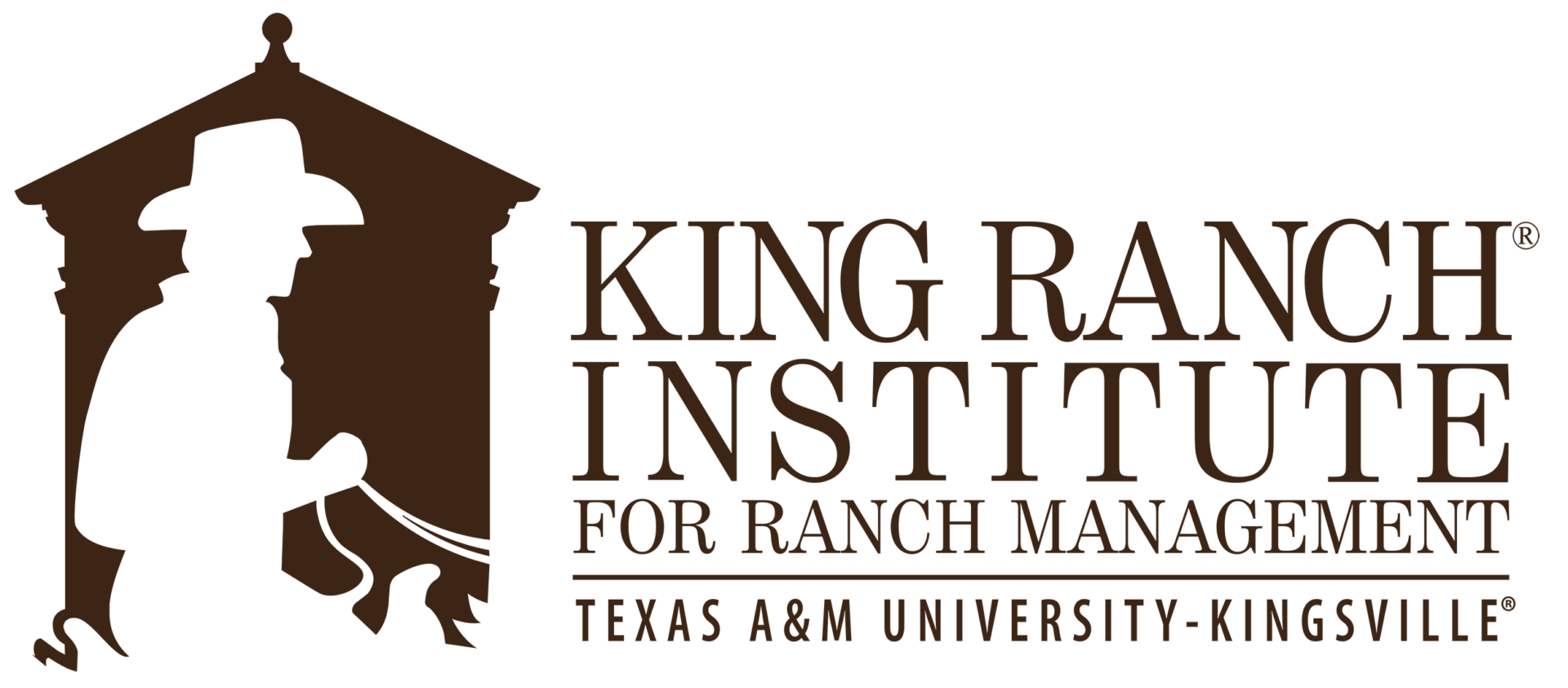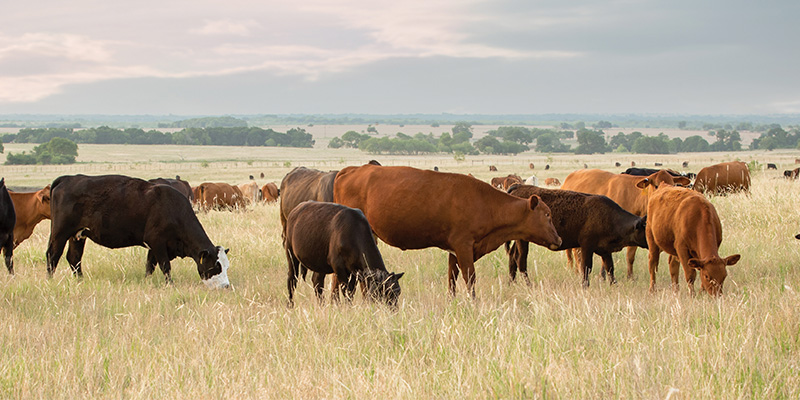by Dave DeLaney, KRIRM Practitioner in Ranch Management
Whether in response to restocking due to drought, or simply a change in operations to take advantage of the uptrend in the current beef cycle, those of us at the Institute thought this might be a timely subject to address.
Of all the strategic decisions the commercial cow-calf operator has to make, few have more long-range implications for overall profitability than those made relative to the development of replacement heifers. Despite higher prices, the demand for our product has been outstanding and the producer seems to be regaining some of the leverage lost since the events surrounding the outbreak of Covid-19. Many think the potential exists for the commercial cow-calf operator to see profits approaching those of the 2014-2015 calving seasons. However, while the outlook for calf prices is excellent, barring any unforeseen “Black Swan” type events, now is NOT the time to become complacent with regard to your overall operating expenses.
The hyper-inflationary environment we’ve experienced the last couple of years, and are likely to see in the near future, means that our annual cow costs have risen steadily over the last few years at a rate I personally can’t recall over my 40- year career. CattleFax has stated that we’ll likely see an all time historic high in 2023 after having set previous highs in 2021 and 2022. While feed inputs have made a big impact on this trend, I think we’d all agree that almost everything costs more. Not to be “Captain Obvious” but being a low-cost, high- performance producer has never been more important in order to protect our operations from ever increasing sales and input cost price volatility. Always remember the top 25% producers in these categories (they are not mutually exclusive) rarely experience losses!
With such high prices and potential profitability, the temptation often exists to take advantage of the current market in order to maximize short term profitability and cash flow. If you are a buyer of your replacement stock, you may simply say to yourself that prices are just too high and you’re going to wait it out. We should caution that, unless under dire circumstances, this should be avoided as even one year will result in a significant aging of your mature cow herd, meaning you’ll have to purchase or retain even more cattle in coming years. It’s often said if we could outguess the market we wouldn’t need our day jobs!
Whether you are on an accrual or a cost basis accounting system, making mistakes in the heifer development process can be very costly from both a production (longevity and fertility) and overall financial standpoint. It also makes up a very high percentage of our total cow herd expenses. While there are many excellent brochures available addressing this issue, from both a financial and production systems perspective, from many of our top Land Grant Universities, in the interest of brevity we won’t dive too deeply into specific system comparisons. However, we hope to stimulate some thought that, despite the fact you may think you already have the best system in place for your operation (and one that has worked efficiently in the past), current events may dictate you take another deeper dive into this subject.
To begin, the promotion of both fertility and longevity (under strict open culling criteria) and thus long-term profitability in the herd, begins with the insistence of ensuring first-exposure heifers calve before, and absolutely no later than, two years of age. A heifer’s inability to breed at or near their first birthday, assuming 60% +/- of mature weight, is highly correlated to infertility issues later in life.

While it is undoubtedly best to more intensively manage both the first and second-calf herds individually – which most larger operations do without significantly increasing inputs – logistics on your operation may make this next to impossible for both. If this is the case, experience for most of us shows that more intensive management of the second-calf herd, where open cattle have already been previously sorted once, should take precedence over the first-calf herd. Also, while most operators use certain breeds or other criteria, such as low calf weight EPD, regarding their bulls on first exposure herds – making stand-alone herds imperative for both this and dystocia reasons – once palpated pregnant, the second exposure herds are often mixed with the more mature cows. In addition, while there are a few direct EPD’s that can be used to promote fertility (heifer pregnancy %, rebreed rate, standardized longevity, etc.), for the vast majority of commercial cow-calf operators establishing an absolute culling criterion of both first and second-calf open females may be the quickest route to building fertility under your specific resource input and environmental conditions. Furthermore, those yearling first exposure open heifers should be of an age that full value can be realized either by selling or feeding out.
In general terms, there are usually only three venues available for replacement females to replace cow turnover, which usually runs 12-15% annually. These include either retained ownership, at weaning or the end of the stocker phase, purchased yearlings – bred or open, or purchased young mature cows. I know many cow-calf operators who run purchased or retained stockers as well, and simply “top” this herd when they ship, usually in the fall. As any successful stocker operator’s goal is to cheapen these cattle back as much as possible, when done right this approach can lead to a high-quality animal with a low book cost. I think all of us would agree that the overall quality of the national cow herd has improved incredibly over the last several years and many heifers being sold on video and elsewhere are available to meet many producer’s expectations. Some hybrid operators, stocker and cow-calf, purchase stocker heifers with this goal in mind and have arrangements to buy other’s calf crops.
Obviously, there are herd bio-security and adaptability issues to be addressed here, but it is being done successfully. In this case, size and age (i.e. limiting the carry period and cost incurred between purchasing and/or sorting and first exposure) can be somewhat controlled in order to minimize cost. As regards the purchase of bred heifers, increasing demand is already driving costs of some reported high-quality heifer sales to $2,500 and higher. Young, bred cows (pairs), are also very high.
Demand for these two classes of animals often comes from diversified landowners who may not be commercial cow-calf producers as their sole or majority source of income or focus. However, there are some very high-quality producers out there who focus on selling quality bred replacement females. We would recommend that you execute a Net Present Value assessment on these animals in comparison to other alternatives, recognizing that there may be other intangibles that are difficult to analyze using a financial model.
While book costs can be established at both weaning and purchase regardless of your approach to female replacements, allocating additional costs can sometimes be challenging unless using a more sophisticated accounting system. However, good producers have a pretty good idea how allocations should be made and estimates of the cost entering the herd for a palpated pregnant first-calf heifer should be made for system comparison purposes. We should all realize that internal heifer development can come with an opportunity cost – from being weaned through exposure to having her first calf can be 445 days or more – not only from an alternative sale price standpoint, but also the requirements for labor, pasture, supplement, etc. that might otherwise be allocated to the mature herd or the stocker operation. These are very high fixed cost operations where the very high return to fixed cost (i.e. using only variable cost in the analysis) realized by additional headcount, more calves or stockers to sell, can be astounding.
While input costs and resource availability vary considerably on both a specific operation and a regional basis, in all likelihood the best approach regardless of option chosen will depend heavily on forage-based programs given the current cost of supplemental feeds. The use of highly-digestible byproducts works well in meeting both energy and protein needs in these situations. In addition, there is research showing that heifers can be successfully bred at lighter weights, saving overall input costs, if placed on an increasing level of nutrition prior to exposure. While this subject in itself is worthy of an article, nutrition is undoubtedly the most important aspect of any heifer development program. I encourage you to google this subject, or contact your extension service or nutritional consultant if you have any question as to the adequacy of your current program.
For many of us, especially larger operations with economies of scale, in house development of retained calf crop females will remain the preferred option both financially and from a production/genetics standpoint. However, regardless of size, all operators should be aware that other alternatives exist, and our best efforts at analyzing and determining these costs are critical to operation success. The basis of most quality improvement programs, both financial and production, has always been, “You can’t improve what you don’t measure!” With all the changes going on in the ranching and cattle industries, we’d encourage you to do a deep dive into this question. After all, the commercial/cow-calf producer is really the only “non-margin” operator in the entire beef production system. While management can add additional sales and value through genetics, production increases and other cost-effective programs, at the end of the day what we control most are our input costs. Any change that will lower unit cost of production will go a long way to making you a more profitable operator over the long term.

